The is one of the following closely-related rocker-arm ascenders:
| Image
| Ascender
| Made in |
Rocker
Arm |
Anvil
Ribs? |
Guide
Pin? |
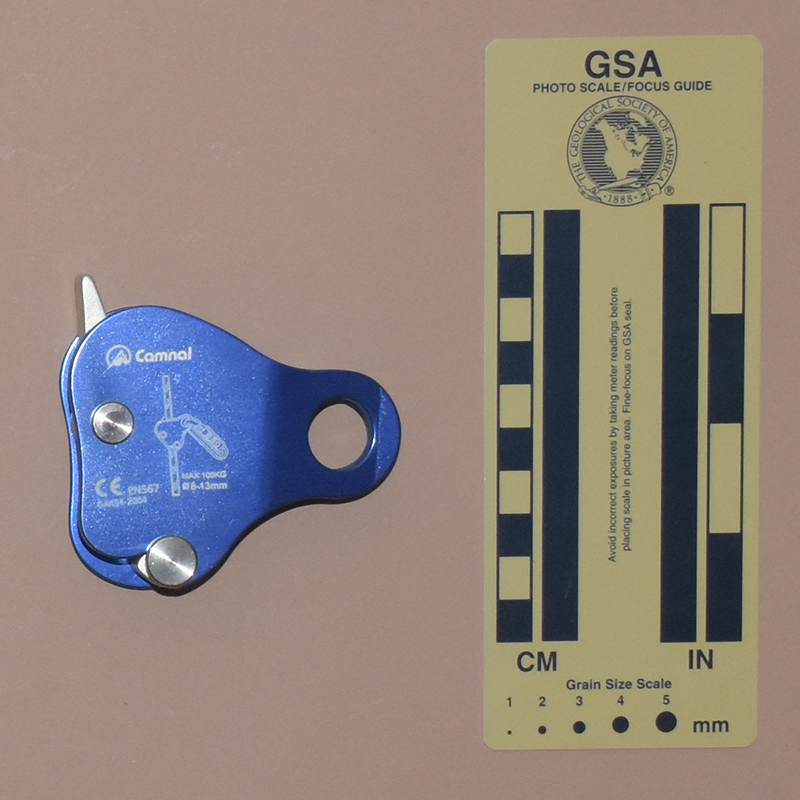 |
Camnal |
China |
Aluminum |
Yes |
No |
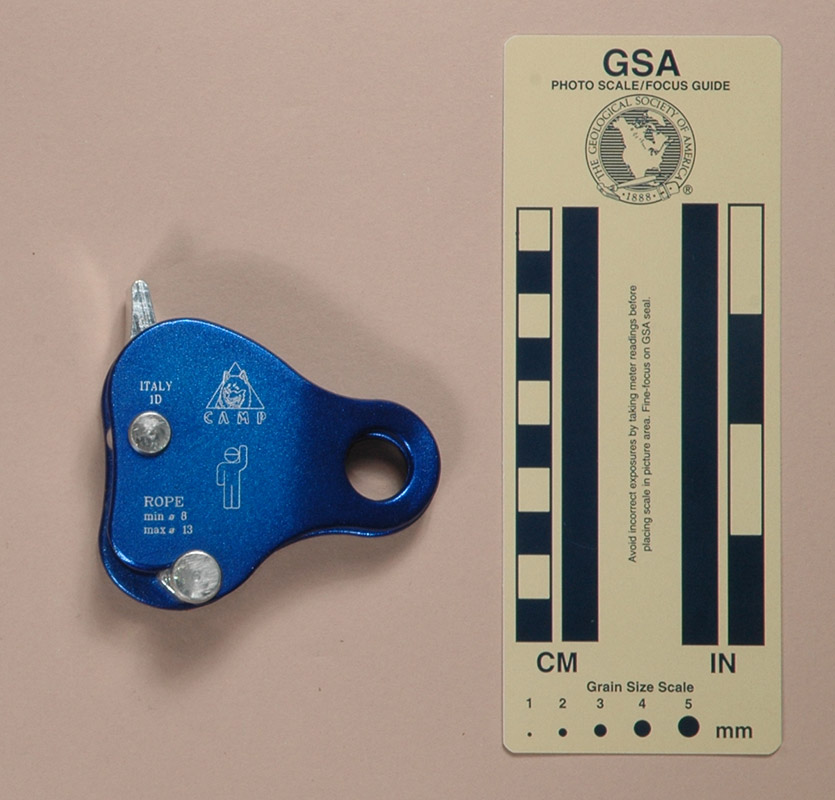 |
C.A.M.P.
Lift |
Italy |
Aluminum |
Yes |
No |
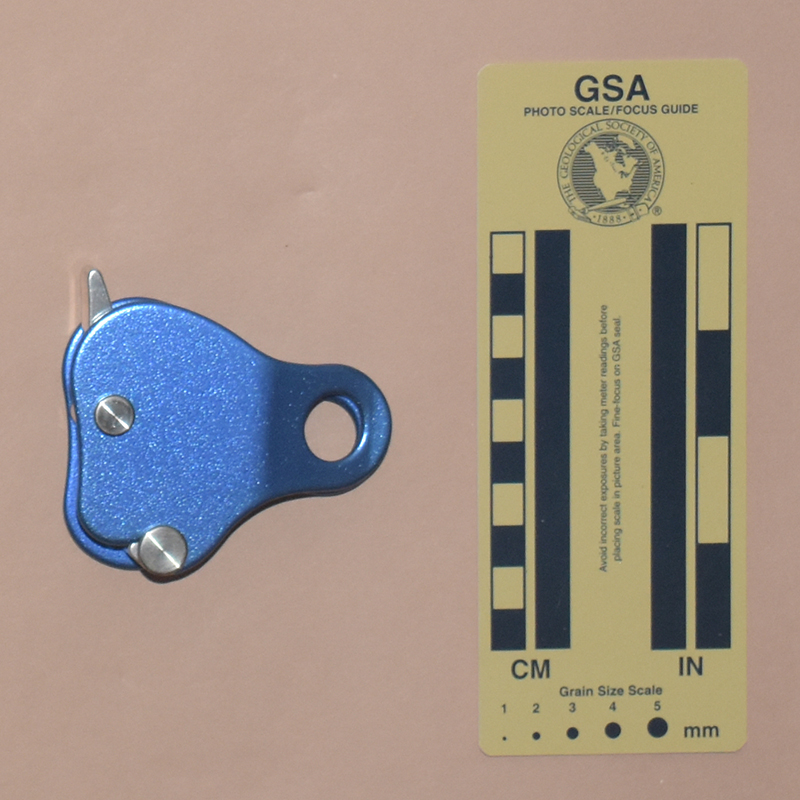 |
Geelife |
China |
Aluminum |
Yes |
No |
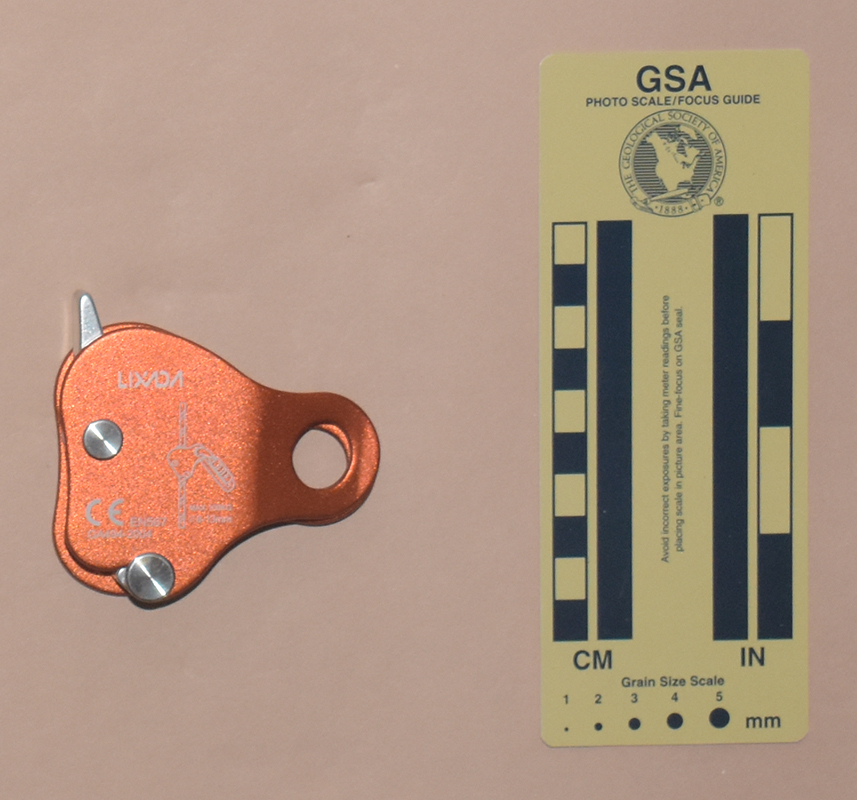 |
Lixada |
China |
Aluminum |
Yes |
No |
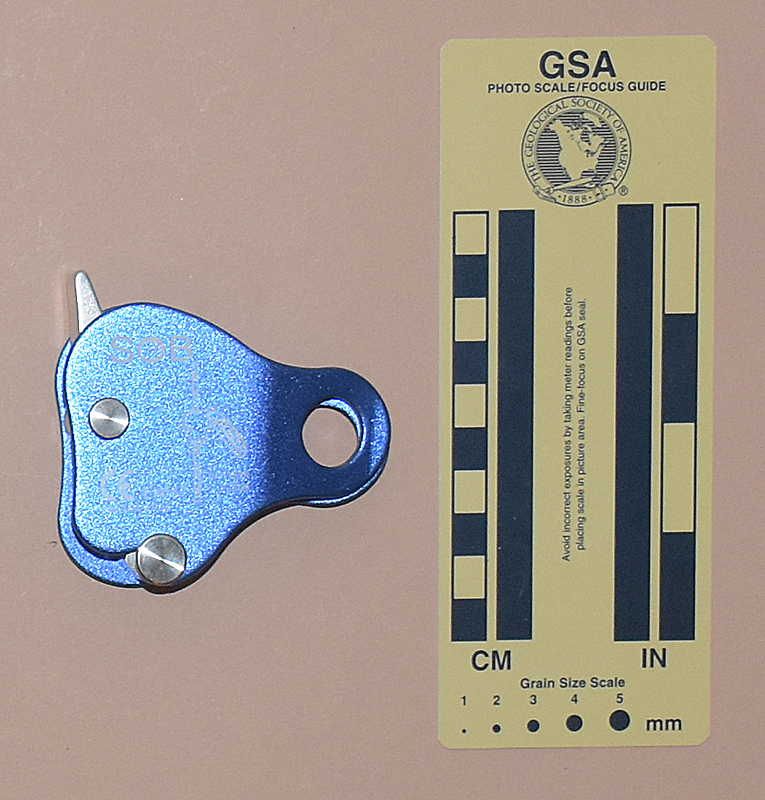 |
SOB |
China |
Aluminum |
Yes |
No |
|
|
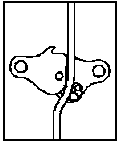 These
are small, reliable, but inefficient ascenders. There is
a significant lost motion with each step as the entire ascender
rotates under load. I wouldn't choose one of these for a long climb,
but their small size might make them attractive for short, remote drops.
These
are small, reliable, but inefficient ascenders. There is
a significant lost motion with each step as the entire ascender
rotates under load. I wouldn't choose one of these for a long climb,
but their small size might make them attractive for short, remote drops.
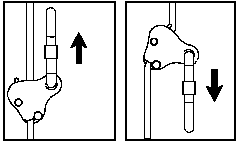 To rig
these ascenders, open the swinging plate and bring the standing rope down between the lever and the anvil.
Close the swinging side gate, and insert a carabiner through
the holes. When load is applied to the carabiner, the rope exerts
a counter-clockwise torque on the lever, and the left side of
the lever squeezes the rope against the anvil. Lifting the carabiner will allow the ascender to slide up
the rope, provided there is enough rope weight below.
To rig
these ascenders, open the swinging plate and bring the standing rope down between the lever and the anvil.
Close the swinging side gate, and insert a carabiner through
the holes. When load is applied to the carabiner, the rope exerts
a counter-clockwise torque on the lever, and the left side of
the lever squeezes the rope against the anvil. Lifting the carabiner will allow the ascender to slide up
the rope, provided there is enough rope weight below.
The Russian Turin Slip-Stop Basic and Vento
each have a guide pin that the others lack. I don't notice the pin making
much difference in how an ascender performs,
but its weight is negligible so I see no harm in having it.
This type of device was invented by Soviet climber Yuri Gorenchuk (Юрий Горенчук). The C.A.M.P. Lift was the first non-Russian version, and it had teeth on the outside of the anvil
(see the C.A.M.P. Lift page for the reason why) .
The teeth serve no function for the ascender whatsoever, but they were faithfully reproduced on all the Chinese copies.
 These
are small, reliable, but inefficient ascenders. There is
a significant lost motion with each step as the entire ascender
rotates under load. I wouldn't choose one of these for a long climb,
but their small size might make them attractive for short, remote drops.
These
are small, reliable, but inefficient ascenders. There is
a significant lost motion with each step as the entire ascender
rotates under load. I wouldn't choose one of these for a long climb,
but their small size might make them attractive for short, remote drops. To rig
these ascenders, open the swinging plate and bring the standing rope down between the lever and the anvil.
Close the swinging side gate, and insert a carabiner through
the holes. When load is applied to the carabiner, the rope exerts
a counter-clockwise torque on the lever, and the left side of
the lever squeezes the rope against the anvil. Lifting the carabiner will allow the ascender to slide up
the rope, provided there is enough rope weight below.
To rig
these ascenders, open the swinging plate and bring the standing rope down between the lever and the anvil.
Close the swinging side gate, and insert a carabiner through
the holes. When load is applied to the carabiner, the rope exerts
a counter-clockwise torque on the lever, and the left side of
the lever squeezes the rope against the anvil. Lifting the carabiner will allow the ascender to slide up
the rope, provided there is enough rope weight below.